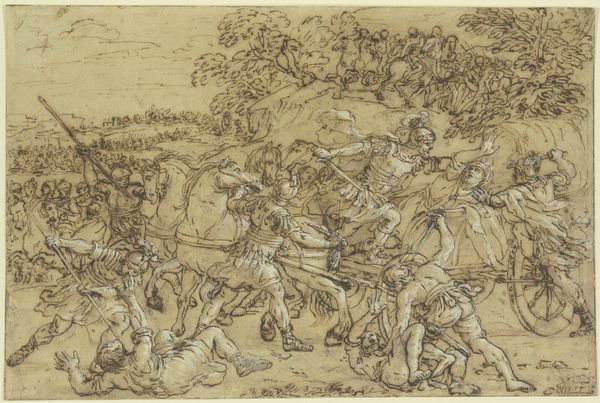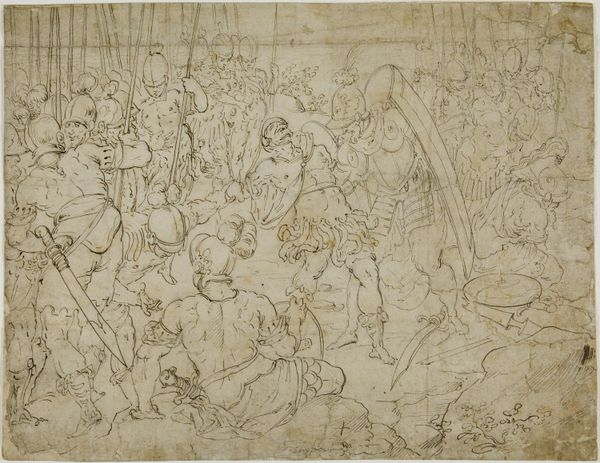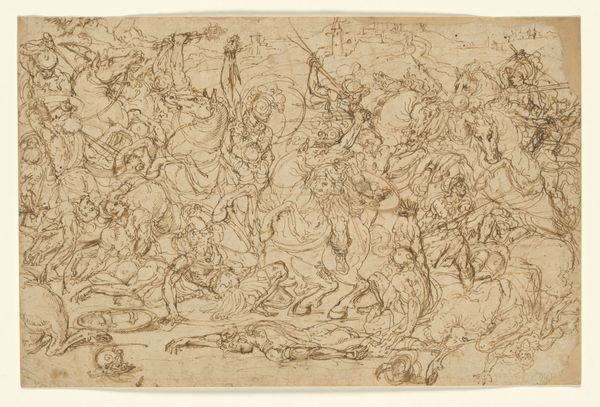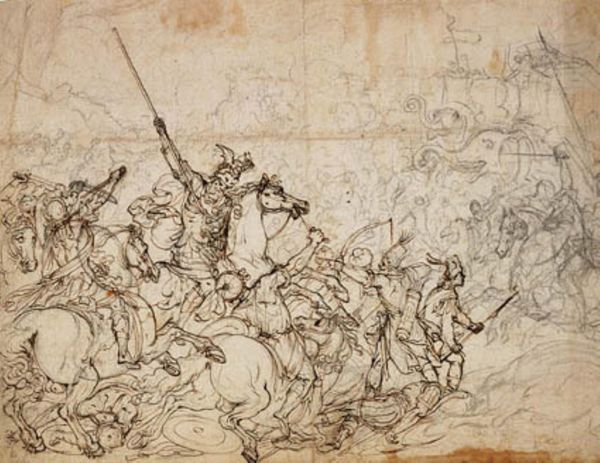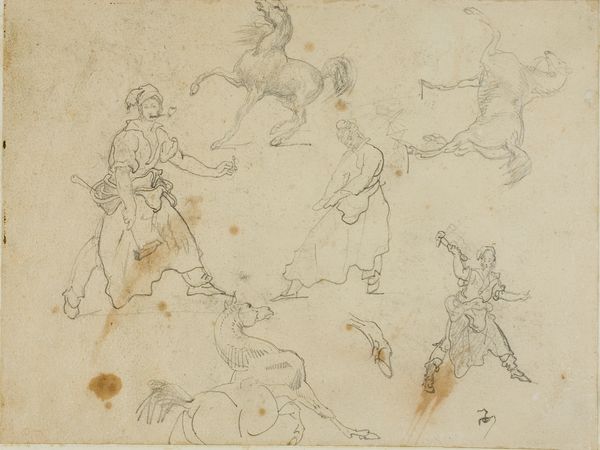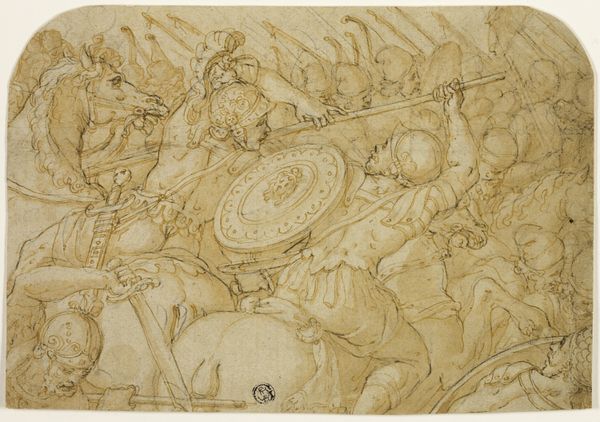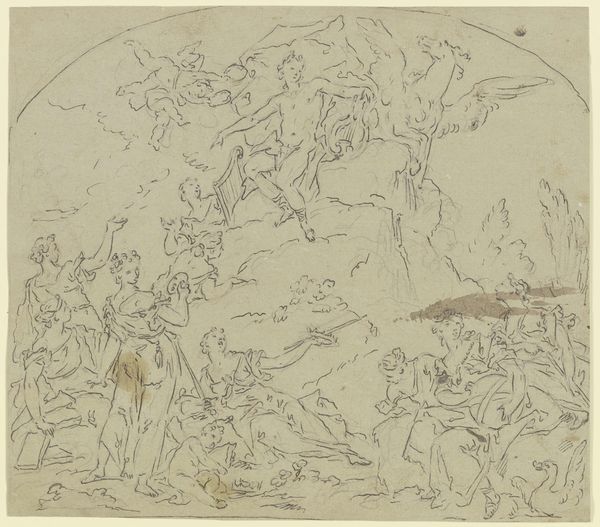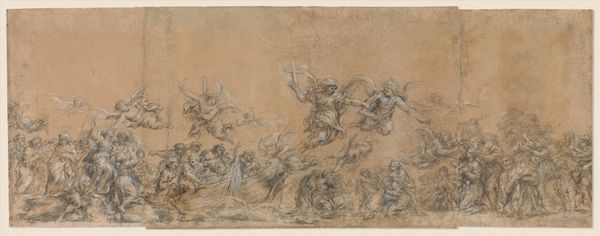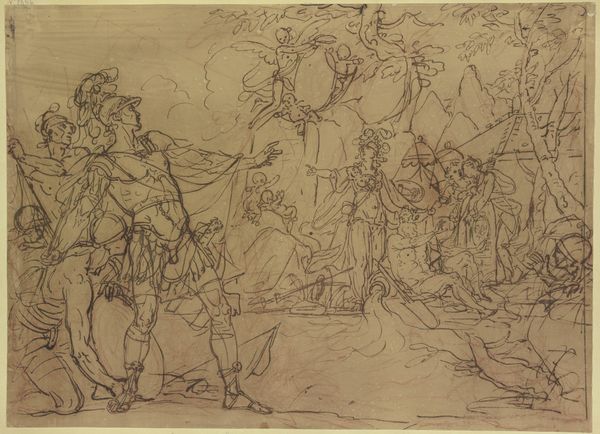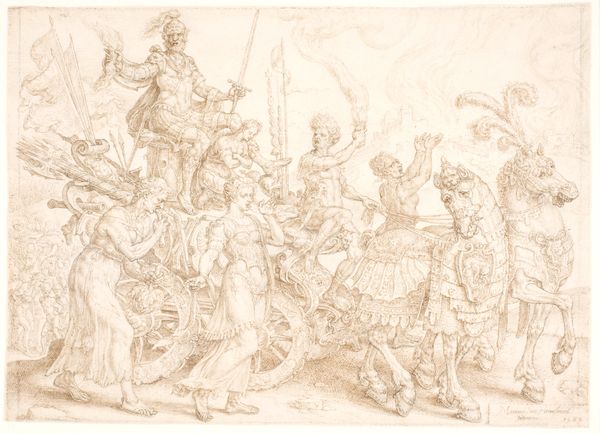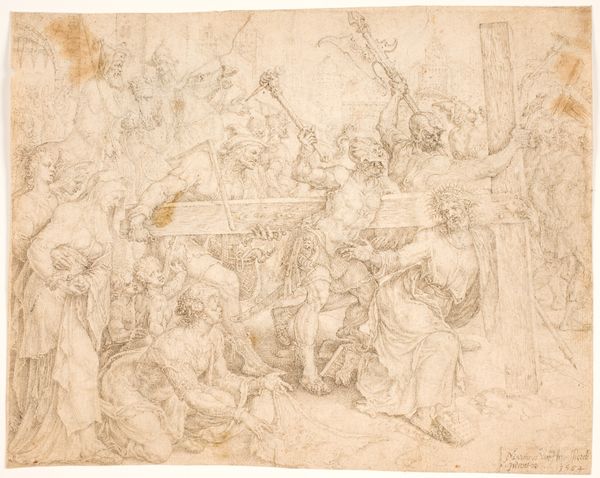
Die Trinität mit Maria, den Heiligen Vitus und Christophorus before 1732
0:00
0:00
drawing, ink, indian-ink, pen
#
drawing
#
allegory
#
baroque
#
ink painting
#
figuration
#
ink
#
indian-ink
#
15_18th-century
#
pen
#
history-painting
Copyright: Public Domain
Editor: This is "Die Trinität mit Maria, den Heiligen Vitus und Christophorus," a pen and ink drawing by Matthäus Günther, created before 1732. It’s incredibly detailed, even though it’s just a sketch. What strikes me is how it depicts religious figures almost floating amidst clouds – very dreamlike. What do you make of this piece? Curator: Dreamlike is a good word. Consider how clouds have historically served as a visual metaphor for the divine realm, obscuring and revealing at the same time. Note how Günther uses line weight to create a sense of depth, with the more clearly defined figures seemingly closer to the viewer. Think about the cultural memory embedded in the Trinity itself— Father, Son, and Holy Spirit, often represented with very specific iconographic features across centuries of art. Editor: So, you are saying the way that figures like Christophorus are represented is not accidental, but has a history? Curator: Precisely. Saint Christopher, for instance, is traditionally depicted carrying the Christ Child across a river, a symbol of his role as a protector. Vitus, another saint included, brings another layer – can you guess why those two saints are shown along with Mary? Consider their patronages. Editor: I see what you mean. If Christopher is the patron saint of travelers and Vitus is the protector against diseases, it’s like they’re calling on these figures for safety and well-being. So the drawing functions like a symbolic shield? Curator: Exactly! It's a powerful evocation of faith, rendered through well-established visual cues meant to trigger recognition and, perhaps, reassurance in the viewer. It gives me chills to witness the emotional and symbolic intent that lasts to our day. Editor: That connection really enriches the whole viewing experience! Thanks so much for sharing your insights. Curator: My pleasure, and thank you for guiding us through the piece with your keen observations!
Comments
No comments
Be the first to comment and join the conversation on the ultimate creative platform.

